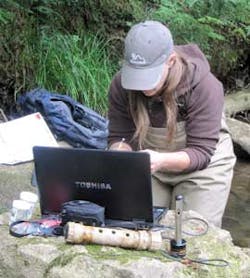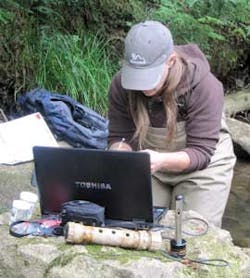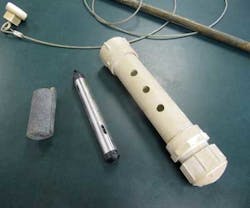By Tricia Lane
The Clarion River was once thought to be the most polluted waterway in Pennsylvania. Now, after decades of cleanup efforts, it has sections designated as part of the National Wild and Scenic River program in the USA. Communities surrounding the Clarion value it for recreational activities. It also provides habitat for extensive aquatic wildlife. This has allowed species such as river otters to thrive, and more recently has led to the return of eagles, now nesting and breeding along the Clarion.
Most important, the Clarion, its tributaries, and the underground springs that flow into it, are sources for municipal drinking water systems. The Clarion is a tributary of the Allegheny River. The East and West Branches of the Clarion River start just beyond the Elk County border in McKean County, PA. These branches meet in Johnsonburg, Elk County, and travel west through to Clarion County.
In recent years, there has been increasing development of the Marcellus Shale in the area, including hydraulic fracturing operations. Fracking operations, along with existing industrial runoff and mine drainage concerns, prompted a new program to monitor water quality in the region.
Elk County Conservation District's Watershed Specialist, Kim Bonfardine, is leading the Elk County Water Monitoring Project. The project is designed to collect baseline water quality data throughout Elk County. This encompasses all six watersheds the county crosses, including portions of the Allegheny National Forest. It involves the Clarion River, as well as other tributaries of the Allegheny and Susquehanna Rivers.
Drilling in the Marcellus Shale has started in Elk County, with hydraulic fracturing only occurring in some areas. The program aims to gather pre-drilling water quality data in areas where fracking has not yet started. It will also provide on-going real-time data to act as an alarm system for any changes in water quality, or pollution events that may occur as nearby operations intensify. The program specifically focuses on drinking water supply areas.
Funding for the program is being provided through grants from two private, local foundations. The donations from Colcom Foundation in Pittsburg and Stackpole-Hall Foundation in St. Mary's have allowed the purchase of water monitoring instrumentation.
Depending on the project area, different monitoring approaches are being implemented.
One aspect of the program includes the use of the Solinst LTC Levelogger Junior to monitor changes in conductivity, water level, and temperature in streams. Conductivity readings provide a general indication of the water quality, while the water level and temperature readings may be used to provide background information when any spikes or significant changes in conductivity readings are noticed.
The LTC Levelogger Junior is an absolute water level, temperature and conductivity datalogger. It consists of a conductivity sensor, pressure transducer, temperature thermistor, 5-year battery, and a datalogger with memory for 16,000 data sets. All components are contained within a 7/8" x 7.5" waterproof, stainless steel housing. Being self-contained, the sensor can be deployed without any other data logging equipment. It is programmed before being deployed using Levelogger Software; the same software is used to calibrate for conductivity and download the data.
The project started by placing the sensors in various streams for two weeks each season, to record baseline data, and to track any seasonal changes. The loggers are being circulated throughout the watersheds to ensure baseline data is collected in all areas of the county. Currently, there are 12 dataloggers installed; set to record every 15 minutes. Some are installed to collect data for six months, and some are to be deployed for up to a year to collect longer-term data.
The sensors are installed in PVC pipe housings, with holes large enough for water to flow through, and held in place using a foam sleeve. The PVC housings are tethered to a metal stake using a length of wire. The stakes are used to secure the housings in the deeper parts of the streams.
Kim Bonfardine has been pleased with the performance of the loggers so far, saying "the ease of use, and simplicity of calibration and data downloading have been very positive factors. They are accomplished in the field with the use of a laptop and Levelogger Software."
An overall goal of the program is to create an online database that is accessible to all residents of Elk County, involving the whole community in the stewardship of their water. The database will include all new data collected and historical data dating back to the 1940s. The database will also allow volunteers, residents, and others participating in water monitoring efforts to upload their own readings to the database. This database will provide a tool to track changes and trends over the long term.
Although the debate continues as to whether hydraulic fracturing is affecting surface water and groundwater quality in general, this project will ensure any effects are identified in Elk County. Overall, it will help maintain a clean, safe drinking water supply to the municipalities of the county, and to those downstream.
For more information on the Elk County Monitoring Project, please contact Kim Bonfardine at [email protected]
About the Author: Tricia Lane is a Technical Writer with Solinst Canada Ltd., in Georgetown, Ontario, Canada. Lane earned a Bachelor of Science degree in Environmental Science from the University of Guelph, and a post-graduate certificate in Environmental Management and Assessment from Niagara College Canada. She can be reached by email at [email protected].





